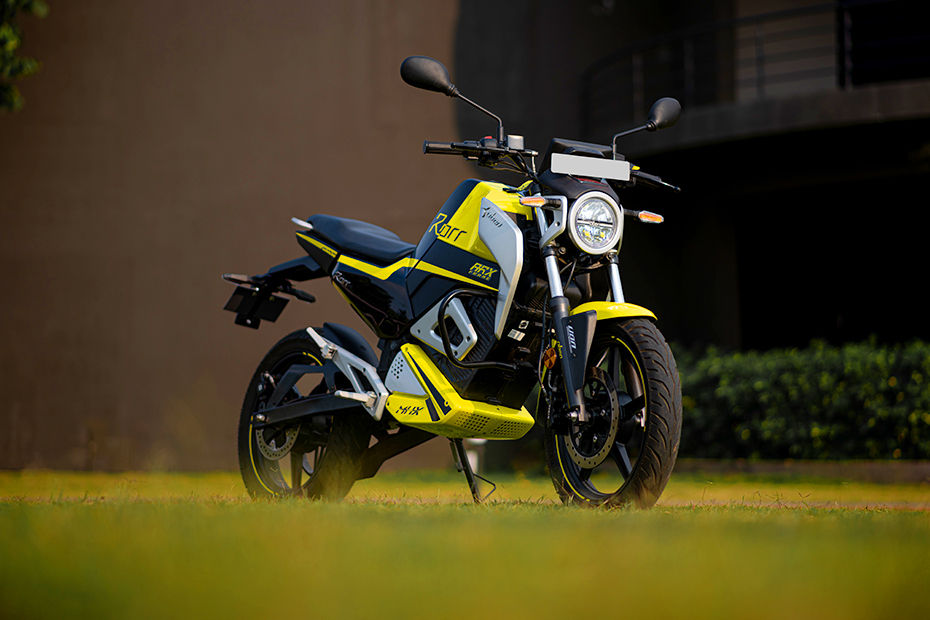Electric vehicles do lots of cool things: they power energy-flying taxi prototypes and electric-powered motors like Teslas and Chevy Bolts. Batteries, not gas tanks packed with sloshing fossil fuels, make those gadgets go. But a number of the most exciting developments within the field are happening on automobiles with wheels: the electric motorbike is coming of age.
A case in point is the state-of-the-art electric bike from California-primarily based Zero Motorcycles, the SR/F, which the agency unveiled yesterday. The motorcycle can hit 124 mph and travel 201 miles in a metropolis (if you pay for added battery ability). It also has mobile connectivity so that it can acquire firmware updates over the air, similar to your cellphone. Harley-Davidson is already accepting pre-orders for its electric-powered motorbike, the LiveWire. It ought to deliver within the fall.

With ranges creeping over two hundred miles, a few electric-powered bikes can travel more than a few fuel-powered sportbikes. Here’s what you need to realize about Zero’s brand new and most excellent choice and the lay of this electron-charged panorama.
Zero Motorcycles
The flagship motorbike from Zero will start at $18,995 in a general configuration. In addition, Zero has added a Motorcycle Stability Control bundle from Bosch to the motorcycle, which manages aspects like torque. (And the SR/F has quite a few torques—one hundred forty foot-pounds, at the same time as a mean gasoline cruiser, might have around 80 foot-kilos.) That can be available if you’re on a moist road and hit the throttle aggressively while the mild turns green. “The gadget knows how hard it may spin the lower back tire earlier than it starts to spin out, and it will boost up you on the maximum velocity it may boost up without spinning the returned tire,” says Sam Paschel, Zero’s CEO.
The stability system additionally allows on-turns, which is a dangerous time for riders. Here’s an ordinary state of affairs for someone on a motorcycle: “You’re on a corner, you’re going too speedy, you panic, you hop at the brakes, the motorcycle stands immediately up and goes directly off the street,” Paschel says. The Bosch bundle can help with that scenario. “Now, the motorcycle stays at that lean perspective—maybe stands up a bit—slows down and carries you via the nook.”
The motorbike’s reality may also have a built-in mobile connection that offers zero new opportunities, as firmware updates straight from the cloud to the motorcycle without using your cellphone as an intermediary. (With previous models, you needed to be in Bluetooth range to look for information about the motorcycle or push through a software update.) While charging, the bike can also ship you an alert while it’s acquired enough juice to get you a predetermined target distance, like 50 miles. Zero can pay for the cellular information wanted for that feature and others for the first two years, and after that, it will cost riders an as-but-to-be-determined quantity.
The popular model will take 4.5 hours to rate, or 1.8 hours if you want to buy a “Rapid Charge” module. Zero also produces less torque and a shorter variety of electric-powered motorcycles than this new bike. For example, a model referred to as the FX starts at $eight 500 with a three. A 6-kilowatt-hour battery will tour simply forty-six miles in a metropolis. Other pricier models will do 223 miles of range, so long as you pay for a further battery known as a Power Tank. But even those $8,500 fashions still can go up to eighty-five mph—and bear in mind, you don’t must shift gears on an electric motorbike. The SR/F will hit 124 mph, which might be faster than you have to cross.
Harley-Davidson
Zero’s new motorbike, the SR/F, isn’t the only electric motorbike in town, as Harley’s LiveWire is predicted within the fall. Unfortunately, that motorcycle is both lots more expensive than the SR/F—it’s $29,799 versus $18,995—and the range will be lesser, too: a hundred and ten town miles in comparison to 161, that’s what the SR/F gets with simply its base battery. But just like the Zero SR/F, the Harley may also have the ability to connect with the cloud through a mobile unit onboard, which means that you may check its charging reputation remotely. LiveWire advertises an acceleration of zero to 60 in much less than three. Five seconds.
“I assume the two cycles will naturally be pitted against each other,” says Paschel, who notes that the Live turned wasted for its price and other specifications. “I desired to leap to their protection—those are, without a doubt, difficult problems to clear up.” After all, a lithium-ion battery doesn’t have the same energy density as a tank full of fossil fuels, and fuel goes to the tank plenty quicker than battery fees.
“They need to be applauded for recognizing that this is the following technology for the destiny of transportation,” Paschel added. Besides Zero and Harley, keep an eye on every other corporation: Lightning, which plans to release a $12,998 electric-powered motorbike called the Strike in the subsequent month. That guarantees quite a several 150 miles, a top pace of 150 mph, and a charge tag of approximately $13,000.
